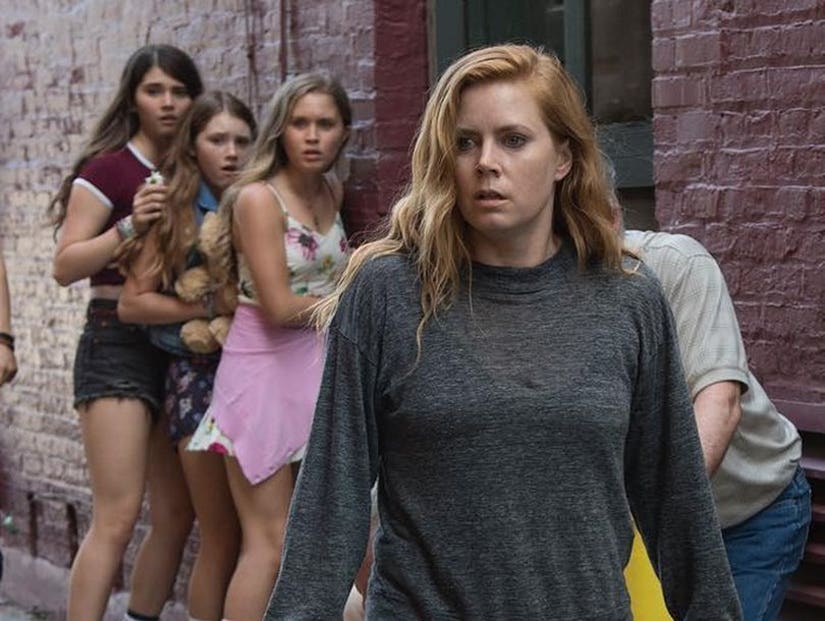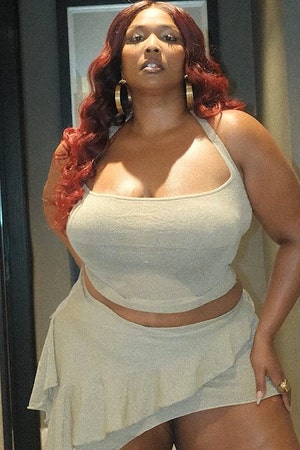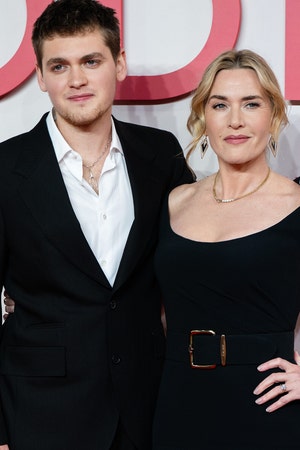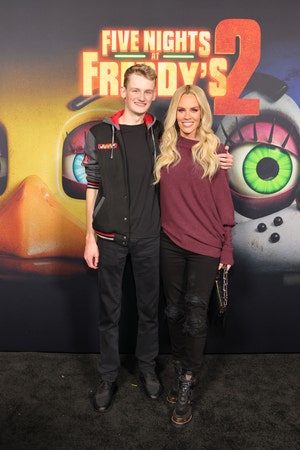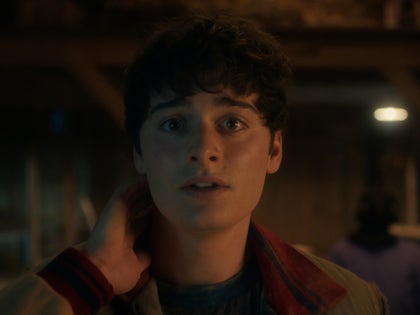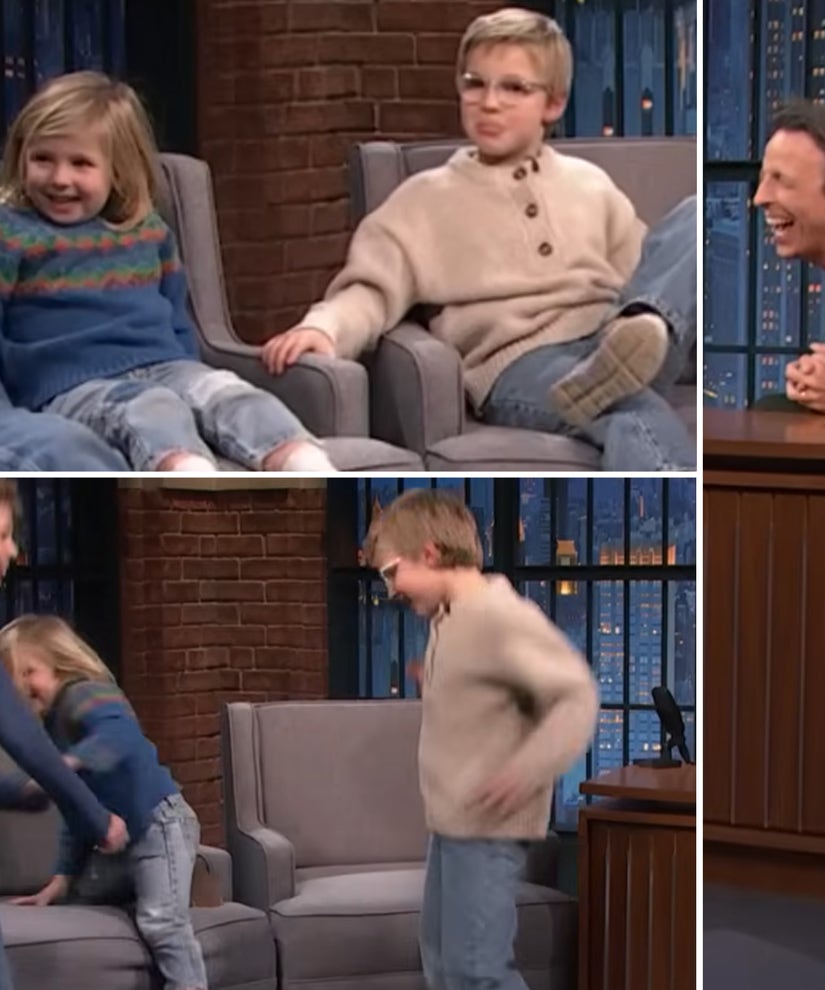For anyone who has tried to argue that no one does repressed emotions like the British, we present to you Middle America, and particularly the South. Gillian Flynn's latest adaptation, "Sharp Objects," landed on HBO as a mini-series and it features a seething rage the likes of which we rarely see on television.
Perhaps it's because it's adapted by a woman (Marti Noxon) from a book written by a woman and directed by an auteur whose most recent project was the critically acclaimed "Big Little Lies," but "Sharp Objects" feels so very authentic in its characterizations from Amy Adams' boozing reporter Camille Preaker all the way up to her desperately proper mother Adora Crellin, brought to life with beautifully restrained power by Patricia Clarkson.
 Getty
Getty
'Riverdale' Star Lili Reinhart Spills on 'Dehumanizing' Fan Encounter and Weird DMs
View StoryWe're only one episode into this eight-part journey, and we're already confident in predicting that Emmy is going to eat this project up. The writing is fresh and invigorating, delicately capturing every raw moment between these shattered women, lingering in their silences as much as in their verbal sparring.
The direction is absolutely mesmerizing, with more than one sequence beautifully jumping from the present and back into Camille's memories by having Amy Adams and Sophie Lillis ("It") perform the exact same motions across time. It's a smooth transition back and forth that perfectly captures how the memories of the past can overtake even the most mundane of tasks when we are surrounded by triggers.
The Anger of Camille
For Camille those triggers are coming back to her hometown of Wind Gap, in Missouri's bootheel, having to stay in her childhood bedroom and having to deal with her oppressive and yet terribly fragile mother, Adora. Showing the same kind of restraint that so many of the characters do, the creators chose to parcel out pieces of the childhood trauma that shattered the Preaker/Crellin women in tiny indistinct morsels so that the full picture doesn't become clear until the closing scenes.
Until that moment, all we knew for sure was that Camille left her hometown years ago to pursue her journalistic dreams, winding up working for a major newspaper out of St. Louis. Something clearly happened to her there, though that trauma remains elusive, save for a few non-sequitur memories that would seem to indicate a lover at some point in her recent past.
Whatever it was left her in a precarious enough psychological condition, that her boss decided the solution was to give her an assignment that forces her to go home and face the demons there. It seems unlikely that the issues that led her to become a semi-functional alcoholic stem entirely from her past in Wind Gap, but it's pretty safe to guess that her early damage only exacerbated her more recent traumas.
She suffers flashes of memory throughout this first hour, and none of them appear particularly pleasant. Lillis turns in another fantastic performance, proving she's a young actress to watch, in each of these vignettes. We see her terrified in the river as some teenager aims a shotgun at her. At another turn, she stumbles into an old cabin where she finds pictures of naked women and chunks of meat in what looks like some twisted cannibalistic serial killer chamber.
And then, her tour de force at the end when we finally learn that the young sister she adored died suddenly, destroying forever the family. We've yet to get a glimpse of the entire family before her death, but we've at least seen that young Camille was full of life and laughter, a far cry from the shell of a broken woman who passed out in her car outside of a bar in the present day.
 Getty
Getty
Maisie Williams' Cryptic 'Goodbye' to 'Game of Thrones' Sparks Bloody Fan Theories
View StoryThe Anger of Adora
There is so much more to unpack with Adora than with Camille, even as she presents as a fairly standard mother who lost a child at a young age and simply can't get over it. In Adora, we are dealing with someone for whom propriety and image are perhaps more important than her own feelings and emotions. It is not a concept alien to many women.
So many times women are told how to sit, how to dress, how to behave, what it is to be a proper lady. And for a woman of another generations, those imperatives were even more important. And so, the struggles that Adora had with her tomboy-ish daughter growing up were particularly difficult for her. Camille was "willful," as were the two slain girls in the present era. But what does "willful" mean?
In the case of Camille, it meant cutting her hair rather than becoming the "dress-up doll" her mother must have wanted her to be. It also meant going swimming and running around recklessly in much the ways boys have been known to do. But an improper daughter appears to only be one of Adora's frustrations.
When Camille described herself as "trash from old money," she was referring to the changing times, and perhaps their changing stature. We don't yet know if Adora had perhaps lost her family's fortune, and thus married Alan Crellin (Henry Czerny) for financial reasons. It would certainly fit with her obsession of her image and how poorly Camille reflects on the family, even all these years later.
What we do know is that the money, or at least the big house, was there when Camille was growing up with her younger sister. We also know that her younger sister prescribed to Adora's image of what a proper young woman should be, or at least she did a better job of pretending in front of her mother. It is very telling that Camille completely lost her mind at her sister's funeral over the makeup she was wearing, making her look even more like a doll.
The Anger of Amma
Back in the present day, Camille's half-sister Amma (Eliza Scanlen) is still a teenager, and having to deal with growing up in the Crellin household after the loss of a younger sister she probably never even knew. Adora has doubled down on her expectations of Amma, pushing her to dress prim and proper in the household and behave like a proper lady, little knowing that the young girl is rebelling outside of the house in a way very similar to how Camille was.
We only got a few moments of Amma at home, not even realizing she was the skating ruffian around town until we finally saw her face in the Crellin house, but it was enough to see that she, too, is suffering from a seething rage. Her bedroom is right next door to a dead child gone for years whose room has become a perfect museum to the child Adora lost.
And so, Amma lives forever in the shadow of her younger sister, someone she says Adora talks about as if she was perfect, which means someone whom Amma fails to live up to every day and in every way, with subtle jabbing reminders from Adora, no doubt, along the way. It's a tragedy to live in the shadow of a beloved dead sibling, because you never feel that you are loved as much as she who was lost.
 Hulu
Hulu
Latest 'Handmaids Tale' Deaths Show There's No Place for Compassion or Love in Dystopian America
View StoryA Sharper Look
What's unspoken about all of the young girls in the story, and Camille as well, is that their tomboyish behavior may be indicative of a deeper difference between them and Adora's "proper" woman. In a fleeting moment toward the beginning of the episode, we saw what looked like a tender exchange between Camille and another woman in her bed.
Is the homosexuality of her child the true great shame of Adora? And is it perhaps, too, the curse of these two young women who have been killed in the present era? The first victim's father revealed that he was violently homophobic, at the same time hoping that a "f----t" had taken his daughter so he'd at least know she hadn't been raped before murdered.
That scene was our only reference to homosexuality in the premiere, but it speaks volumes to the type of thinking that still exists in small-town Middle America. And the openness in which he revealed his prejudice was also truthful to life in some of these communities, where such views haven't changed with the more liberal-leaning bigger cities.
Beyond that glimpse, the premiere was much more about establishing mood and setting up all the possible suspects -- which at this stage is everyone we see -- than about getting into any of the investigative work that will slowly narrow those down until we have our culprit, the motives and the truth of whatever was haunting Camille in the past, and destroyed her world in the present.
But like the simmering anger of our three female leads, it's going to be a slow burn to get there. We'll use this section in future installments to drop our theories about the ongoing murder investigation, the characters, the townsfolk, Camille's life in St. Louis, and really anything else that crops up. Let's see if we can figure it out before they reveal it.
"Sharp Objects" airs Sundays at 9 p.m. ET on HBO.

